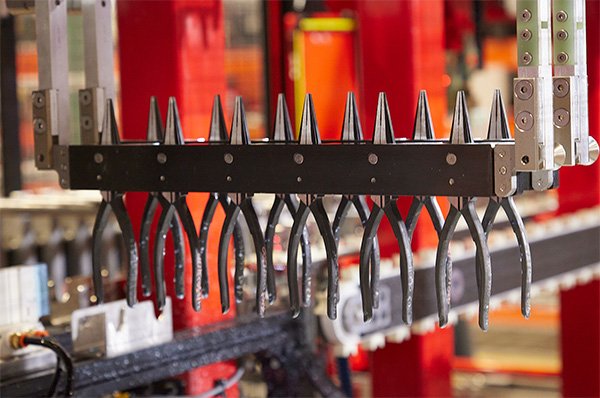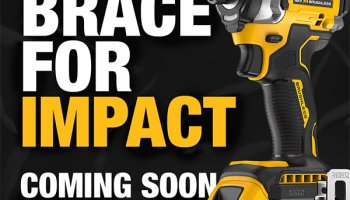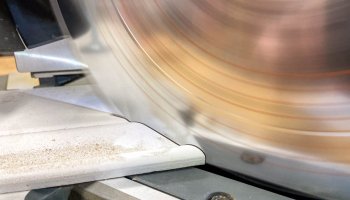
If you buy something through our links, ToolGuyd might earn an affiliate commission.
A few months ago, I toured the new Milwaukee Tool factory in West Bend, Wisconsin, where they are producing hand tools in the USA from 100% USA-made materials.
This took place in August 2022, and I was last told at the start of this year that the new tools will be launching in mid-2023.
Photography was strictly prohibited, but I was permitted to take notes when possible. I recently reviewed my notes, and thought ToolGuyd readers would appreciate some of the details.

To start off, the factory is 95,000 square feet, and was built with expansion in mind, such as with a blow-out wall that can be removed when needed.
Milwaukee Tool invested $55 million to open the factory, and at the time they said they expect to employ more than 150 workers there.
The factory has modern automation and Industry 4.0 processes, with everything digitally connected.
Every process involves automated measurements, checks, and controls.
To start off, the pliers undergo press forging, as opposed to hammer forging. This involves less processes and contributes to better grain uniformity. It was later added that hammer forging, in comparison, is less precise, produces parts of lower strength, and does not modify the inner structure of the forged materials.
We were shown publicly-available “how it’s made” video footage of a competitor’s product line, as an example of how to make inferior pliers and cutters.
Milwaukee Tool made no effort to hide that they’re looking to take on the industry champs.
The initial forging process is done with a 1600 ton press, where a 2000A induction heater brings the billet to 2350°F for 2.5 seconds.
Underneath the press is a 14-foot concrete pad that, if I recall correctly, was completely decoupled from the rest of the factory floor in order to minimize vibrational transfer. The main floor sits on an 8-inch slab of concrete.
Vaughan, a USA-based hammer manufacturer, recently decommissioned large equipment from their factory. In their social media post, they said: 5000# drop hammer moving out to make space… was told that base weighs over 100,000 pounds. Bushnell residents might remember when this was being used… you could feel it almost around the whole town.
Milwaukee designed their vibratory pad and concrete foundation to ensure there’s no vibration transfer to the machining area, let alone outside the building.

The tools are made using all USA-sourced materials. This means they will be 100% made in the USA, without the need for “global materials.”
The trim waste is sent back to the steel manufacturer. We were also told that Milwaukee is not mixing metals for reclaim.
One of the talking points was about how the processing steps are so precise and consistent that left and right sides of pliers can be matched months apart.
The matching precision also allows for the jaws of long nose teeth to be matched with grooves aligning peak-to-valley for “incredible gripping power.”
Laser hardening of the jaws and teeth is used, rather the induction hardening, for precise control, and long-lasting edges.
The auto riveting process was a high point of the tour, showcasing Milwaukee’s automated fine-tuning process, which gives their pliers the “smoothest open and close.” There’s no break-in process needed, the pliers are smooth to open and close right from the start.
Unfortunately, I neglected to record how many points of measurements are taken in order to achieve this. But, it was made clear that this is a benefit of automation rather than leaving pivot/rivet installation up to human variances.
We were handed pliers to examine, and they felt perfectly broken-in. An early pliers sample was shipped to me, and the same is true. It remains to be seen whether off-the-shelves tools will have the same perfect feel, but I have optimistic expectations.
The end of the tour brought us into an on on-site quality and materials testing laboratory, where there was an abundance of equipment, such as Instron testing systems, an optical comparator, Zeiss coordinate-measuring machine (CMM), hardness testers, and more.
They have the ability to test things such as screwdriver torque, pliers open and closing effort, and cutting edge life. I wish we were able to see some of the testing in action!
It was planned that the factory would run 3 shifts 5 days a week, with weekend surge potential if or when needed.
What surprised me most is that there were 3 sets of machines for one stage of pliers production, each capable of outputting up to 10 pliers parts an hour.
If that’s the bottleneck, it means the throughput was limited to 30 parts an hour. Keep in mind that pliers and cutters require two parts.
As I understand it, this explains why it’s taking some time for the first wave of tools to launch.
Here’s what it takes to produce pliers and screwdrivers:
Milwaukee Tool USA Pliers Manufacturing Steps
- Forging (press, not hammer)
- Coining
- Automatic CNC machining
- Laser edge hardening
- Automated Riveting
- Polishing
- Handle Assembly
- Laser Etching
- Finish and product inspection
Milwaukee Tool USA Screwdriver Manufacturing Steps
- Machining
- Deburring and grinding
- Handle Assembly
- Laser etching
- Inspection
Lastly, the forging dies have a life cycle of 10,000 strikes, and can be redressed for extended life.
Milwaukee said that they invested $450 million dollars in the USA over the last few years. $55 million towards this factory seems like a small but meaningful part of that.
The new 95,000 square foot factory was designed with the potential for growth and expansion in mind. Milwaukee Tool also has the right of first refusal to purchase an additional 20 acres in the area.
The factory is located in a new 216 acre industrial park in West Bend, which is 20 minutes away from Milwaukee Tool’s global and R&D headquarters.
More than 5 years ago, Milwaukee Tool Group President Steve Richman said the following:
Milwaukee Tool is dedicated to driving growth and creating new jobs in the United States.
At the time, Milwaukee Tool employed over 3,500 people in the USA.
As of February, 2023, Milwaukee Tool “proudly employ[s] more than 10,000 people in the U.S.”
What do you think Milwaukee Tool will do with up to 20 acres of developable land in an industrial space 20 minutes away from their main campus?
Here is a list of tools that are being made at the Milwaukee’s West Bend, WI factory:
Lineman’s Pliers with Dipped Grips
- 9″ (MT500)
- 9″ w/ Crimper & Bolt Cutter (MT500C)
- 9″ w/ Thread Cleaner (MT500T)
Lineman’s Pliers with Comfort Grips
- 9″ (MT550)
- 9″ w/ Crimper and Bolt Cutter (MT550C)
- 9″ w/ Thread Cleaner (MT550T)
Long Nose Pliers
- 8″ Dipped Grip (MT505)
- 8″ Comfort Grip (MT555)
Diagonal Cutting Pliers with Dipped Grips
- 6″ (MT506)
- 7″ (MT507)
- 8″ (MT508)
Diagonal Cutting Pliers with Comfort Grips
- 6″ (MT556)
- 7″ (MT557)
- 8″ (MT558)
Read More:






